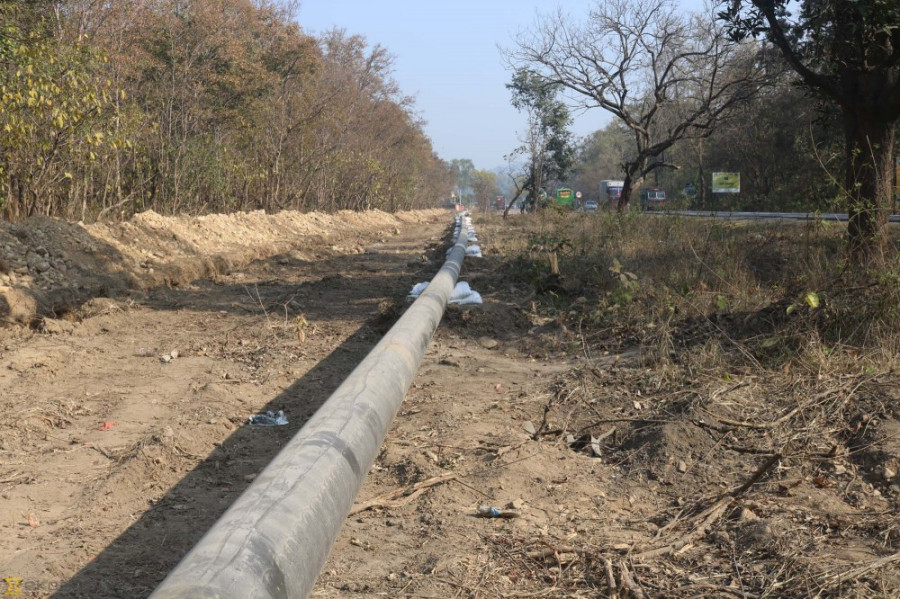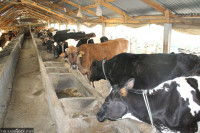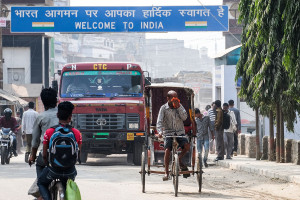Money
Gasoline could start flowing through the new pipeline next month, say officials
A Nepal-India technical team is currently conducting tests on the cross-border pipeline.
Rajesh Khanal
Gasoline could start flowing through the newly-built cross-border pipeline next month. Nepal’s first oil pipeline is likely to become operational as soon as next month since the pipelaying work has been completed. Officials said they were conducting preliminary tests on the pipeline by sending water through it. According to Nepal Oil Corporation, the tests are being done in coordination with Indian Oil Corporation, its sole supplier of fuel.
“For the initial testing, we are carrying out cleaning of the inner part of the entire pipeline by using an air compressor which will be followed by hydro testing,” said Nepal Oil Corporation engineer Sharad Prasad Poudyal looking after the pipeline project. According to him, a control unit is being constructed at the corporation’s Amlekhgunj depot.
Poudyal said they were also checking the valves in the pipeline. There are 50 valves installed in the pipeline to check the flow of oil. “We are yet to fix the date for bringing the pipeline into operation,” he said.
According to the state-owned enterprise, a joint technical team consisting of personnel from the Nepal Oil Corporation and Indian Oil Corporation is conducting the tests on the pipeline. The 70.2-km pipeline extends from Amlekhgunj to Motihari in India. Of the pipeline’s total length, 36.2 km lies within Nepali territory.
Poudyal said the pipeline would be used to import petrol, diesel and kerosene from India. In the initial stage, the corporation plans to import diesel through the pipeline. It will not be used to import liquefied petroleum gas.
Construction work on the pipeline started on March 9 last year, more than 20 years after the first discussions were held between Nepal and India on implementing the project.
Indian Oil Corporation had proposed constructing a cross-border pipeline in 1995 and signed a memorandum of understanding with Nepal Oil Corporation at the junior executive level a year later. In 2004, the two sides upgraded the agreement to the chief executive level. However, due to a number of legal hurdles, the project failed to take off.
Indian Oil Corporation provided most of the money to build the pipeline which is estimated to cost Rs4.4 billion. Nepal Oil Corporation’s expenses included land compensation payments and the cost of building infrastructure and upgrading its depot in Amlekhgunj. According to the corporation, it has upgraded three out of its four fuel storage tanks at the Amlekhgunj depot. These tanks can hold 16,000 kilolitres of fuel each.
The pipeline has a capacity to transport fuel at the rate of 291 kilolitres per hour. The construction of the pipeline is expected to help ensure regular supply of petroleum products to Nepal besides reducing transportation costs and eliminating the hassles of hiring tanker trucks.
The country’s fuel import bill surged 43.1 percent in fiscal 2017-18 to Rs170.13 billion. According to Nepal Rastra Bank, oil imports soared 30.7 percent to Rs172.43 billion in the first 10 months of the current fiscal year.




 8.12°C Kathmandu
8.12°C Kathmandu














